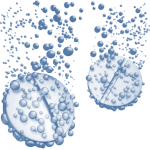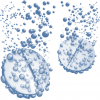Solubility enhancement of gliclazide by surface solid dispersion technique by probe sonication method
Hitendra S Mahajan, Ghanashyam A Girnar
Abstract:
Many drug molecules are poorly water soluble so that unable to produce their desired effect. To solve this problem different approaches are used like physical modification which includes particle size reduction, solid dispersion, micro emulsion, complexation and chemical modifications. Among all techniques solid dispersion (SD) is promising technique to increase drug solubility, still very few SD are available in market because of stability issue of SD. So to overcome this issue new technique is applied known as Surface Solid Dispersion (SSD). SSD is a technique that provides deposition of the drug on the surface of certain materials (carriers) that can alter dissolution characteristics of drug. In SSD dissolution enhancement occurs because it reduces drug agglomeration and increases drug surface area. Drug release depends on nature of carrier so carrier should be porous, hydrophilic with fine particle size. Drug of choice in this study is Gliclazide (GLZ), BCS class II drug. SSD is prepared by probe sonicator to reduce particle size and solubility enhancement. The vibrations from sonicator are transferred into solution via tip of probe which induces cavities in solution. The solution in cavities becomes supercritical fluid because of large temperature and pressure difference between bulk solution and cavity solution. As per previous study compound shows high solubility in supercritical solvent, also cavitation cause micro streaming which leads turbulence of solid-liquid film which accelerates mass transfer process which leads solubility enhancements of drug. When formed cavities collapsed it releases tremendous energy which leads particle size reduction.
Keywords: Surface Solid Dispersion (SSD), Probe Sonicator, Solubility Enhancement.



